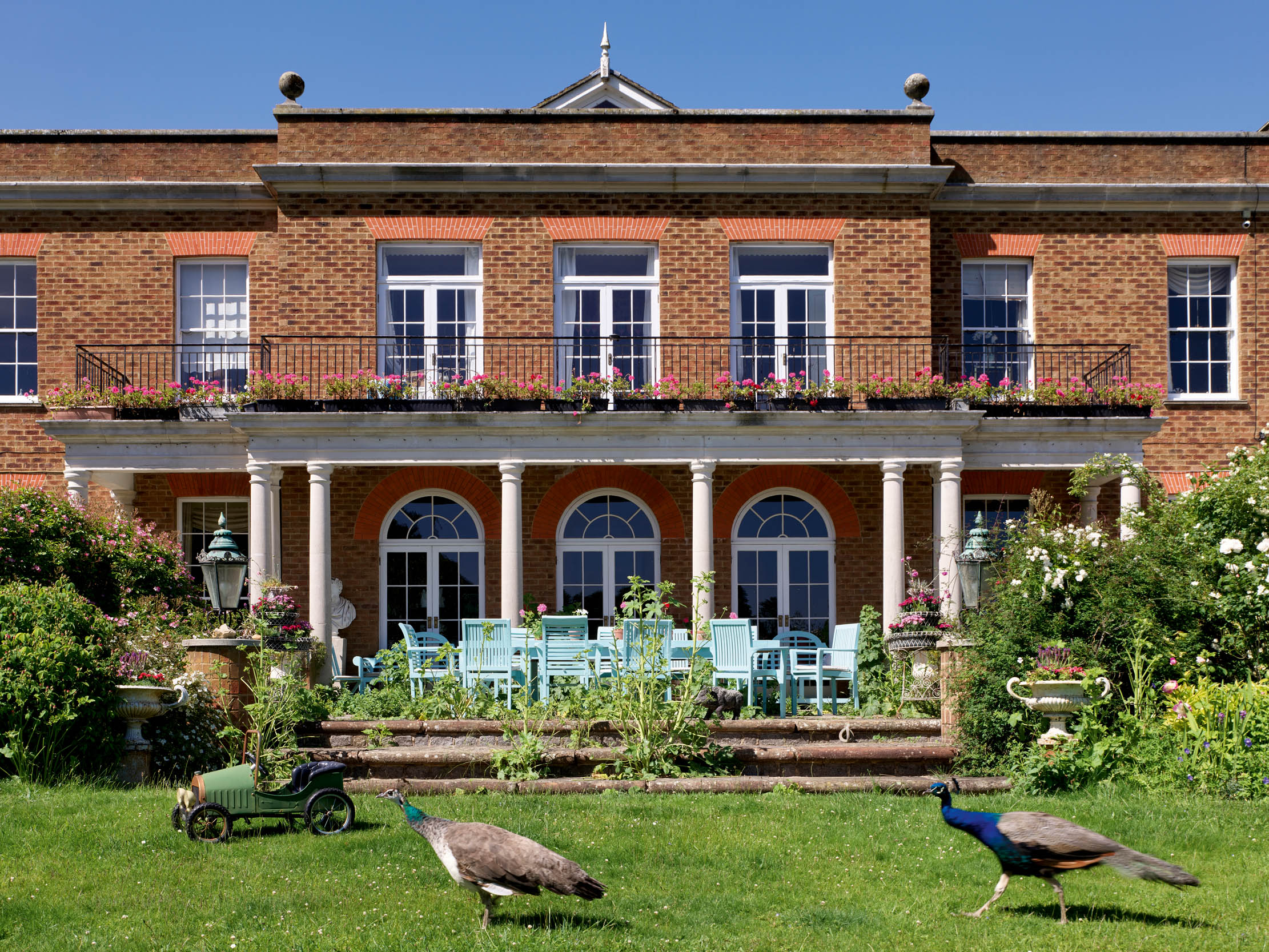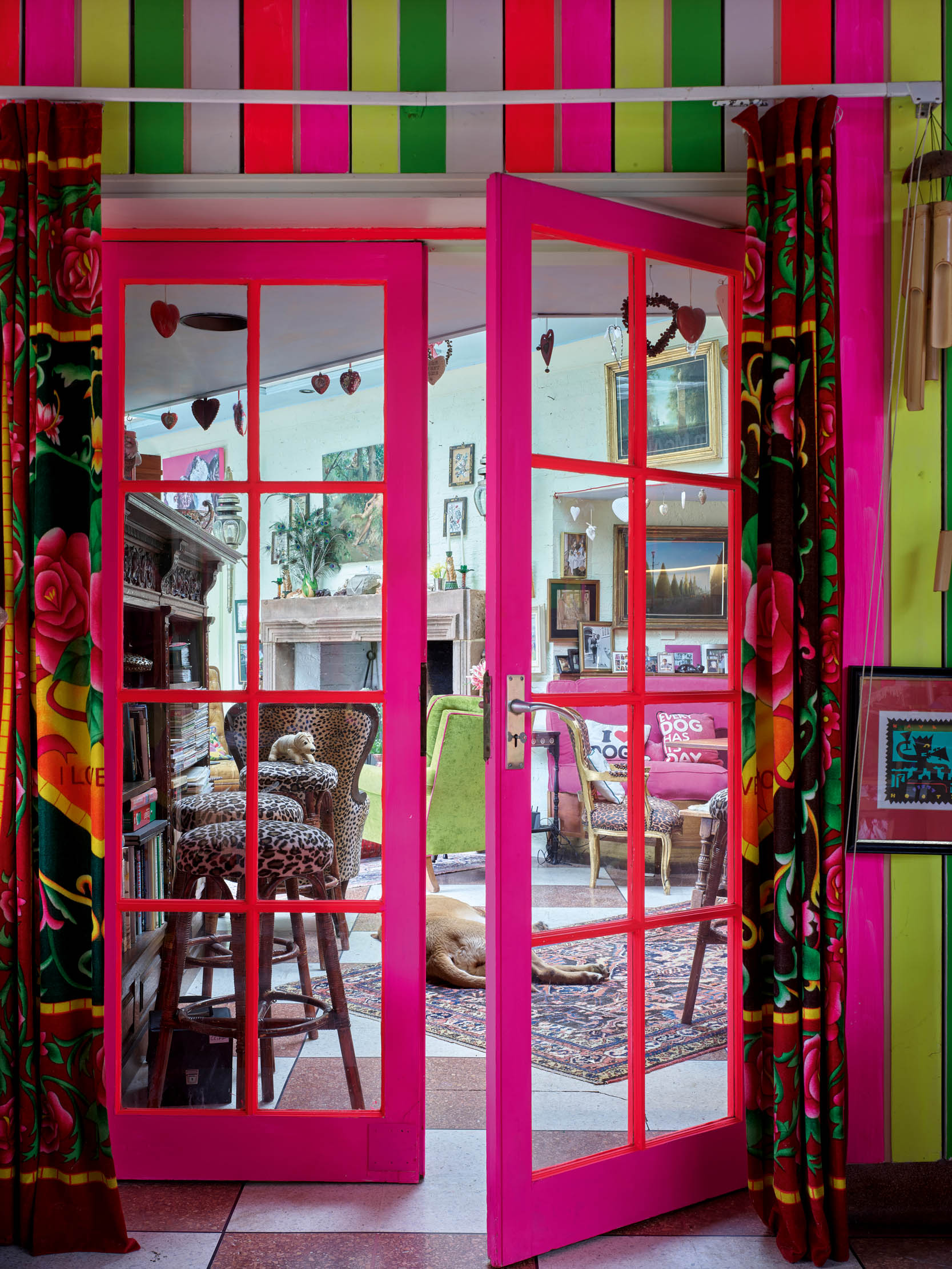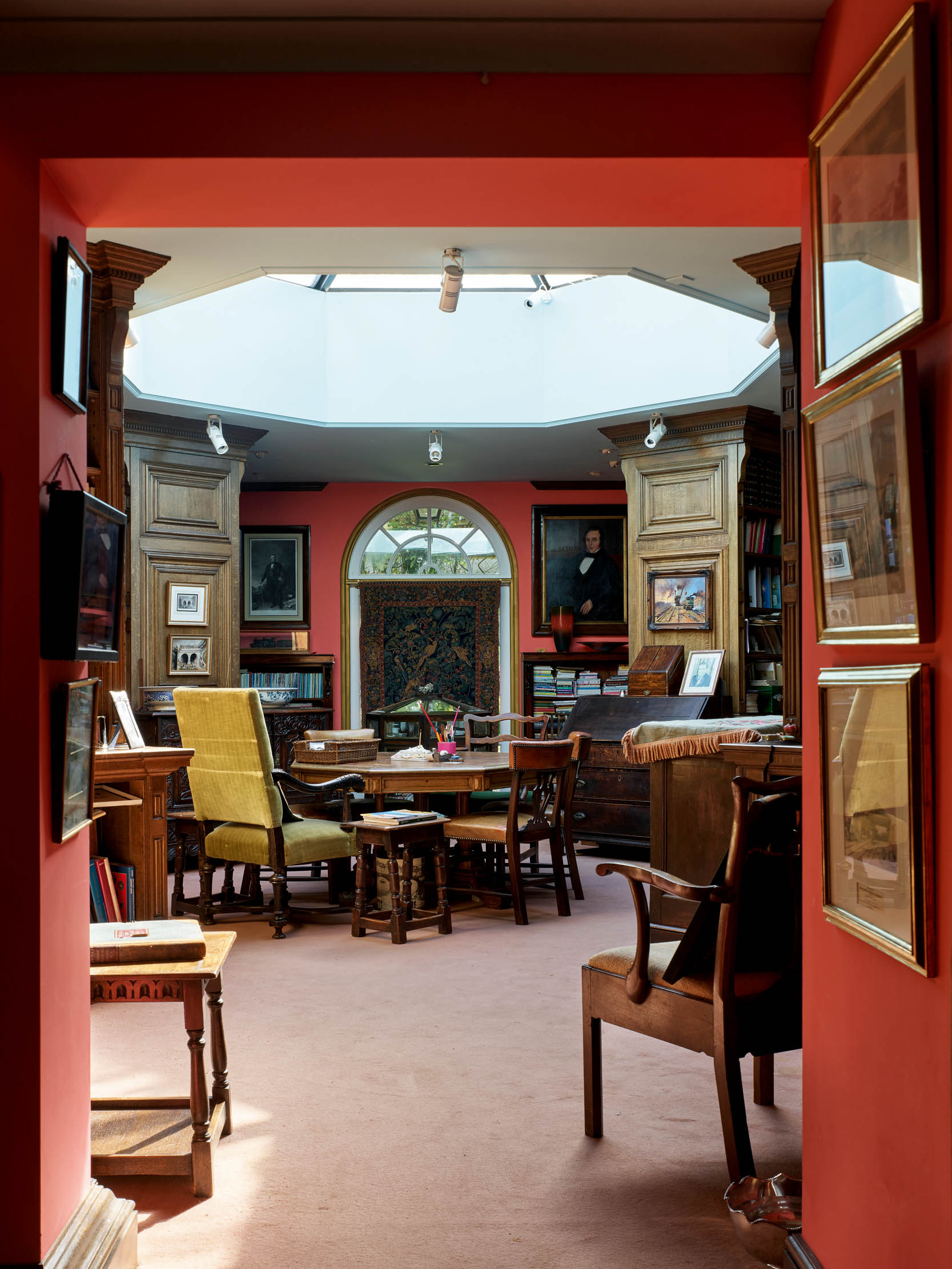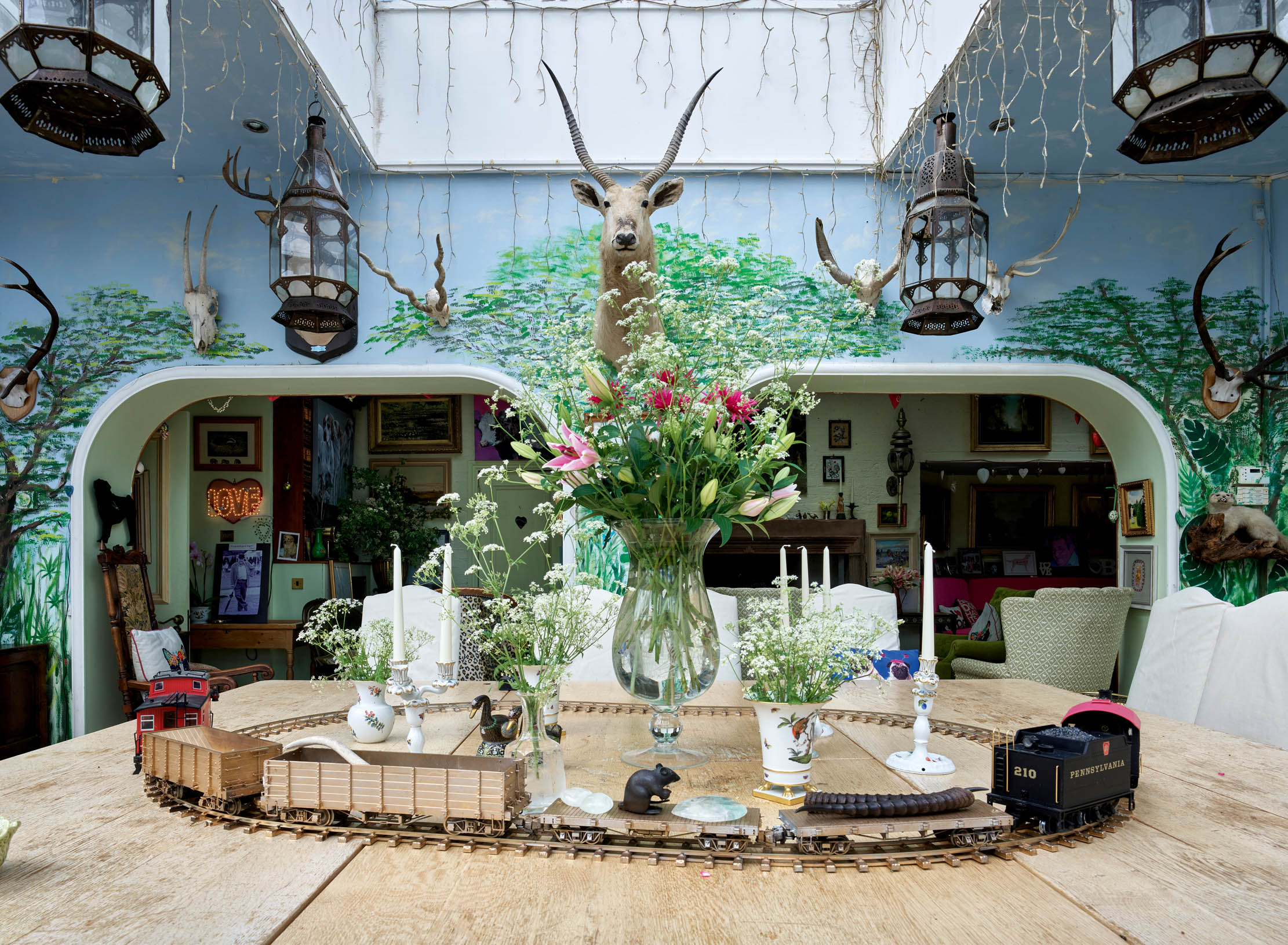Fawley Hill: Inside the wacky and wonderful home of the late Sir William McAlpine
In the second of two articles looking at Fawley Hill, Buckinghamshire — the home of Lady McAlpine and the late Sir William McAlpine — Marcus Binney looks at a home filled with remarkable collections and striking interiors that reflect its creator’s enthusiasms and interests.

[Click here to read Marcus Binney's article on the Fawley Hill Railway.]
By the time they have reached the front door of Fawley Hill, first-time visitors have necessarily encountered much that will have amazed them. Readers of last week’s article have already been introduced to Fawley Hill's park and railway network, replete with stations, signal boxes and architectural salvage, as well as the seven species of deer that roam freely in the surrounding woods and even, in the turning circle at the front of the house, a colony of meerkats.
Central to all these marvels were the personality and enthusiasms of the late Sir William McAlpine. Bill, as he was known, was born in the Dorchester Hotel in 1936 and left Charterhouse school aged 16 to start work in the family construction firm Sir Robert McAlpine Ltd. He went first to the company depot in Hayes in Middlesex where engines and rolling stock were kept, work that fired his life-long interest in railways.

Sir Robert McAlpine Ltd was founded in Scotland in 1868, the first contract being for a humble signal box. The firm was soon building railways such as the Mallaig extension on the West Coast Line, and the now famous Glenfinnan Viaduct, as well as the Singer Factory at Clydebank, a gasworks in Glasgow, an aluminium works and several power stations. At the outbreak of war in 1914, the firm became involved in constructing munitions and aircraft factories, followed by the 1924 Wembley Exhibition Buildings, the Mersey Tunnel and, soon after, the Ebbw Valley Steelworks and Elstree and Pinewood film studios.
In 1960, Bill married Jill Benton Jones, daughter of another great industrialist, Sir Peter Fawcett Walter Benton Jones. As Bill was the eldest son, when he announced his engagement, his father offered him a site on the family estate outside Henley to build a house. Bill chose a hillside for the views. The newlyweds, aged 23 and 22 respectively, set about designing their dream house and enlisted the help of Graeme Weatherley, a 26-year-old architect who was working for McAlpine’s. Company archives have not yet revealed more of his oeuvre.
The young couple was quite conservative and thought ‘Georgian’ was their preferred style. The house they designed with ‘G. Weatherley’ — as Bill always called him — was built of red brick. It began as the Georgian box one might expect, with colonnades providing shade and shelter on both entrance and garden fronts (Fig 2), but it grew rapidly into something much more complex over the next 15 years. This staid exterior makes the flamboyant interiors all the more striking.

They begin with the oval staircase hall (Fig 3), which rises the full height of the house and is surmounted by a splendid oval dome and lunette. There are precedents for such halls with cantilever stairs in grandly conceived houses of the second half of the 18th century, but they are a rarity. One example is to be seen at Moccas Court, Herefordshire, completed in 1781, and another in the interior that may have inspired it: at Sharpham Hall, Devon, built in about 1770 by architect Sir Robert Taylor for Capt Philemon Pownell, winner of the greatest Spanish prize ship of the Seven Years War. The question is whether Weatherley could have known of either of these examples. The family story is that the young architect simply misunderstood a sketch by Jill. Whatever the case, the stair itself is one that Fred Astaire and Ginger Rogers would surely have been pleased to sweep down in Hollywood.
Exquisite houses, the beauty of Nature, and how to get the most from your life, straight to your inbox.
Opening off the hall is the drawing room (Fig 1). A distinctive flourish of this interior typical of the late 1950s and 1960s is the stripped pine panelling. In the early and mid 18th century, pine panelling — much cheaper than oak — was always painted to conceal the wood and its numerous knots. In the post-war years after 1945, however, huge quantities of Georgian panelling was salvaged from bomb-damaged houses (much of it stored in the basement of the London County Council) and it became fashionable to strip it to reveal the natural wood. The McAlpine drawing room came from Crowther of Syon Lodge, Middlesex, which traded in vast quantities of fittings of infinitely varied origin. It was installed by Elliotts of Reading, a company that was owned by McAlpine’s and otherwise did all the joinery in the house.

The drawing room opens through double doors into a tented and fabric-lined dining room (Fig 4). This was installed by Oliver Messel, the great interior decorator of the era. Messel is reported to have judged the room too long in proportion to its width for a tented interior, so he shortened it by introducing a columned lobby with cupboards at one end. Messel was also responsible for the Green Room, the small sitting room on the other side of the Drawing Room, which is now a music room.
At first, this enfilade of rooms formed the basis of the ground-floor garden front to the south, with a kitchen, service rooms, and a couple of smaller rooms on the north side. Very soon, however, a loggia was added beyond the dining room, in which Bill installed a bar. To state the obvious, this was not a feature often found in more traditional country houses. Bill, however, relished cocktails and cocktail making and was capable of producing recipes from his wallet if those at the bar were unfamiliar with a favourite drink.
The Loggia in turn grew by degrees into an enormous conservatory. This houses another feature Bill could not be without: his breakfast table, complete with a train that circulates the mustards and jams (Fig 7). Beyond this garden room and the bar is another setpiece, a dance floor covered with an Ordnance Survey map of England to show most of the pre-Beeching railway network. At the press of a button, it folds up to reveal an indoor swimming pool of impressive size. The room is now known as The Playroom, in which visiting children can be lost for hours, even when the swimming pool is covered over. A statue of a crooning Elvis Presley in the corner evokes the pre-Beatles era in which Bill grew up.

In its original form, the room featured elastoplast-pink walls, but, following the death of his first wife in 2004, Bill remarried. He gave his second wife, Judy, a Pucci beach towel at the same time that she was preparing to transform the room for their wedding reception. In response, she created a striped colour scheme based on that of the towel for the room (Fig 5). It’s one of many daring such schemes she has created that further enliven the interior of the house.
Opening off the stair hall at the other end of the house is a corridor lined with framed Great Western Railway jigsaws, handmade puzzles that were produced between 1924 and 1939 to give children something to do on railway journeys. The set is — naturally — complete. Above it is hung a collection of exotic hats from around the world to which Lady McAlpine, on arrival, added more.

The first room opening off the corridor is the so-called Harem (Fig 8), a name that sometimes confuses visitors. It is full of Indian and other exotic textiles and artefacts, has a deep gold cornice and a gold-painted floor. Next is the Flying Scotsman Suite, which has its own library and memorabilia marking Bill’s rescue of the famous engine after it fell into the hands of creditors during a tour of the US. He owned the renowned steam engine from 1973 to 1996. Here, also, is the reputed sporran of the outlaw and folk hero Rob Roy MacGregor (d.1734), claimed as an ancestor.
Through the original Library — which, in addition to Lady McAlpine’s art, antique and gardening books, still houses vast quantities of leather-bound railway books — you come to Sir William’s Library. This is an octagonal room added by Bill to accommodate his huge and important library of railway books and journals, which has a series of double-sided book stacks radiating out from a central, octagonal table by Pugin (Fig 6). In plan, the arrangement is exactly like that of a railway round house, with book stacks instead of steam engines. To ensure a suitable quality of binding, Bill employed a bookbinder, setting him up in business. Through his labours, long runs of railway periodicals were honoured with the dignity of Morocco bindings.

When Bill and Jill built Fawley Hill, it was furnished as a family house with, eventually, bedrooms for children, but not for guests. Lady McAlpine, with her own family and a passion for entertaining, has had to improvise bedrooms wherever she can, including a magnificent carved Jacobean four-poster bed in Sir William’s Library. Shower rooms have been slipped discreetly into cupboards.
Outside the library windows are the six columns that Bill originally requested from St Pancras, re-erected with the beams they once carried — as opposed to the 36 that form Ironhenge, illustrated last week. There are columns from Victoria Station, too, which relate to a distant monument in the park. This is Bill’s funeral monument on a hill opposite the house, which has as its centrepiece an ornate cast-iron railway column with a fluted shaft, Ionic capital and a double pedestal. To view the grave slab, you look through a vast iron ‘tyre’ from the Flying Scotsman, surmounted by the Sir William McAlpine engine nameplate. The inscription includes the epitaph borrowed from Sir Christopher Wren: ‘If you seek his monument look around you.’

Bill was a collector on an astonishing scale, but he told his wife that he didn’t want his treasures to moulder away in some museum store. Rather, he would prefer others to have the pleasure of owning stuff. ‘So sell,’ he urged, ‘when you feel the time is right.’ ‘But,’ says Lady McAlpine, ‘I’m still adding to the collection! It is important to continue the good work he began. So much would have been destroyed had he not intervened. I’ve taken on some of his causes, in particular the National Transport Trust: as important to our engineering heritage as the National Trust is to our built heritage; and I’m doing all I can to raise awareness of the trust and our engineering heritage. If Fawley Hill can help this cause, I hope someone will take it on when I’ve gone.’
The scale of what her husband created is brought home in the park and the large shed that houses the museum close to the main station. This is an Aladdin’s cave of railway collectables. One room is dominated by a giant departure board from Victoria Station, with revolving station names, and another by a scale model of the R101 airship hovering over an ‘O’ gauge model railway layout of the same scale. The walls are hung with enamelled advertisements found on stations in pre- and post-war years. Contents, such as huge stuffed animals, are shuffled around when events are held. One of the best attended was Bill’s own memorial service, with 2,000 strong railway voices booming out The Battle Hymn of the Republic, his favourite.
Visit www.fawleyhill.co.uk to find out more.

The millionaire who created a real-life toy train set on a human scale
The astonishing assemblage of buildings, machinery and memorabilia at Fawley Hill, Buckinghamshire — the home of Lady McAlpine and the late